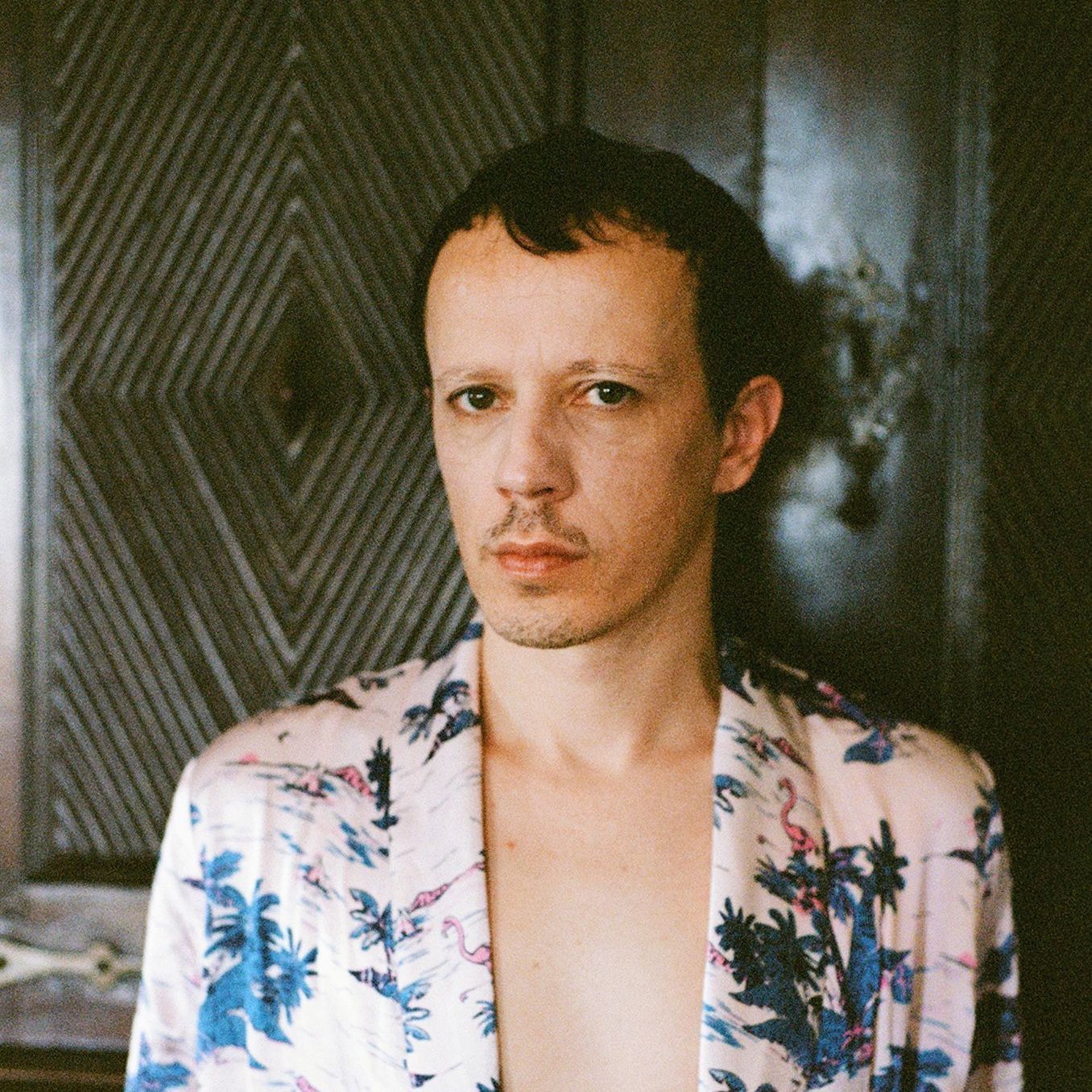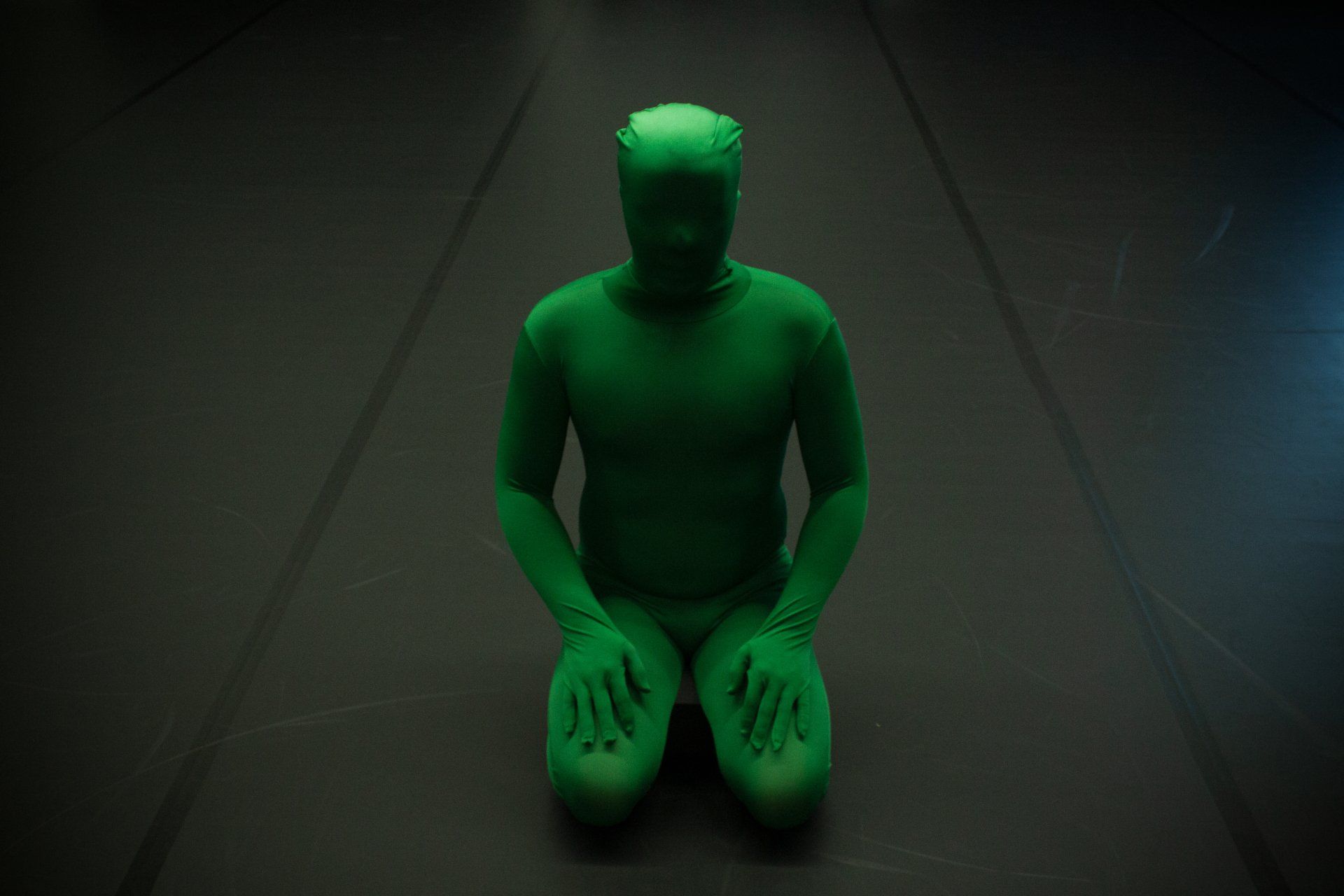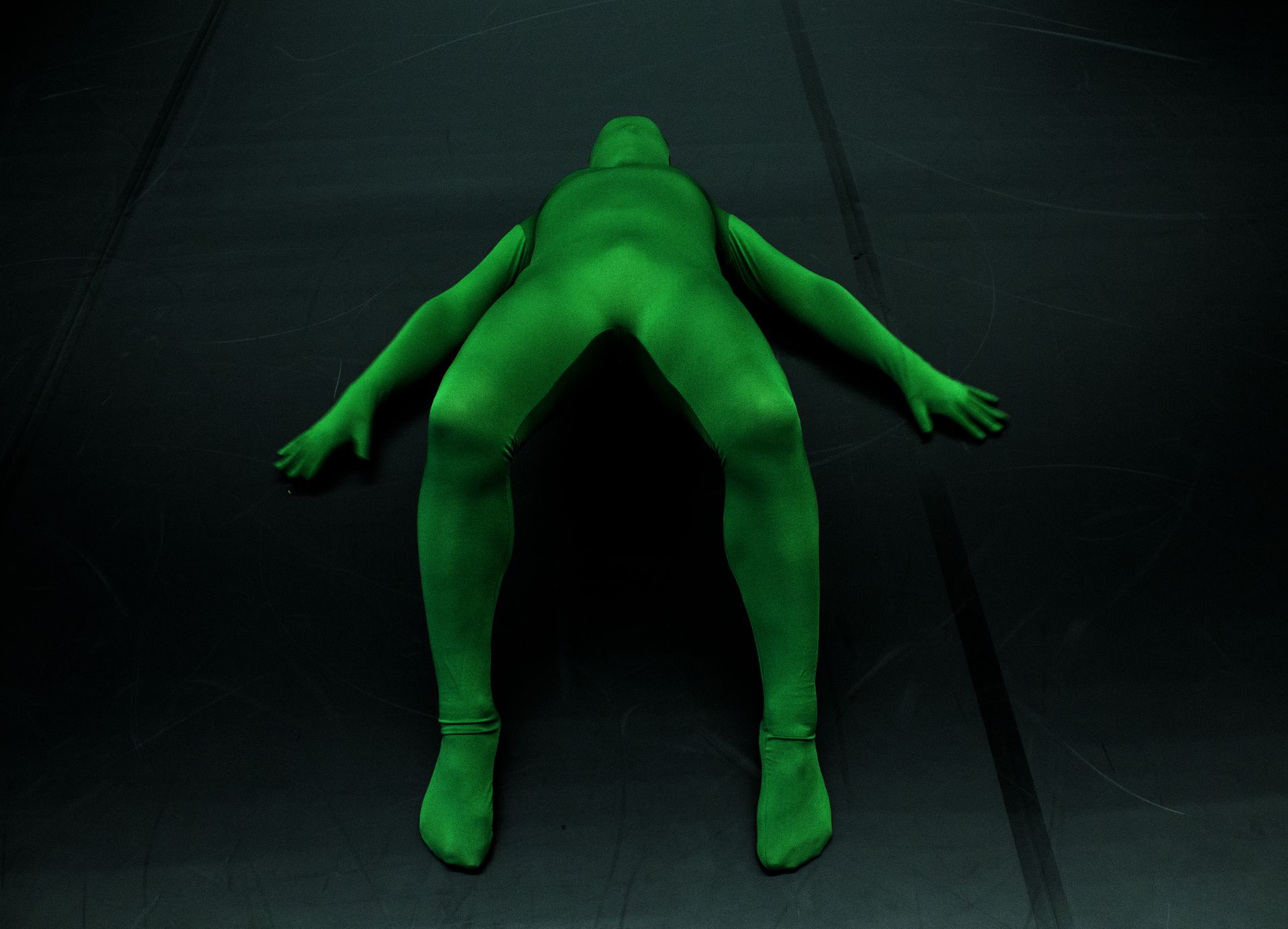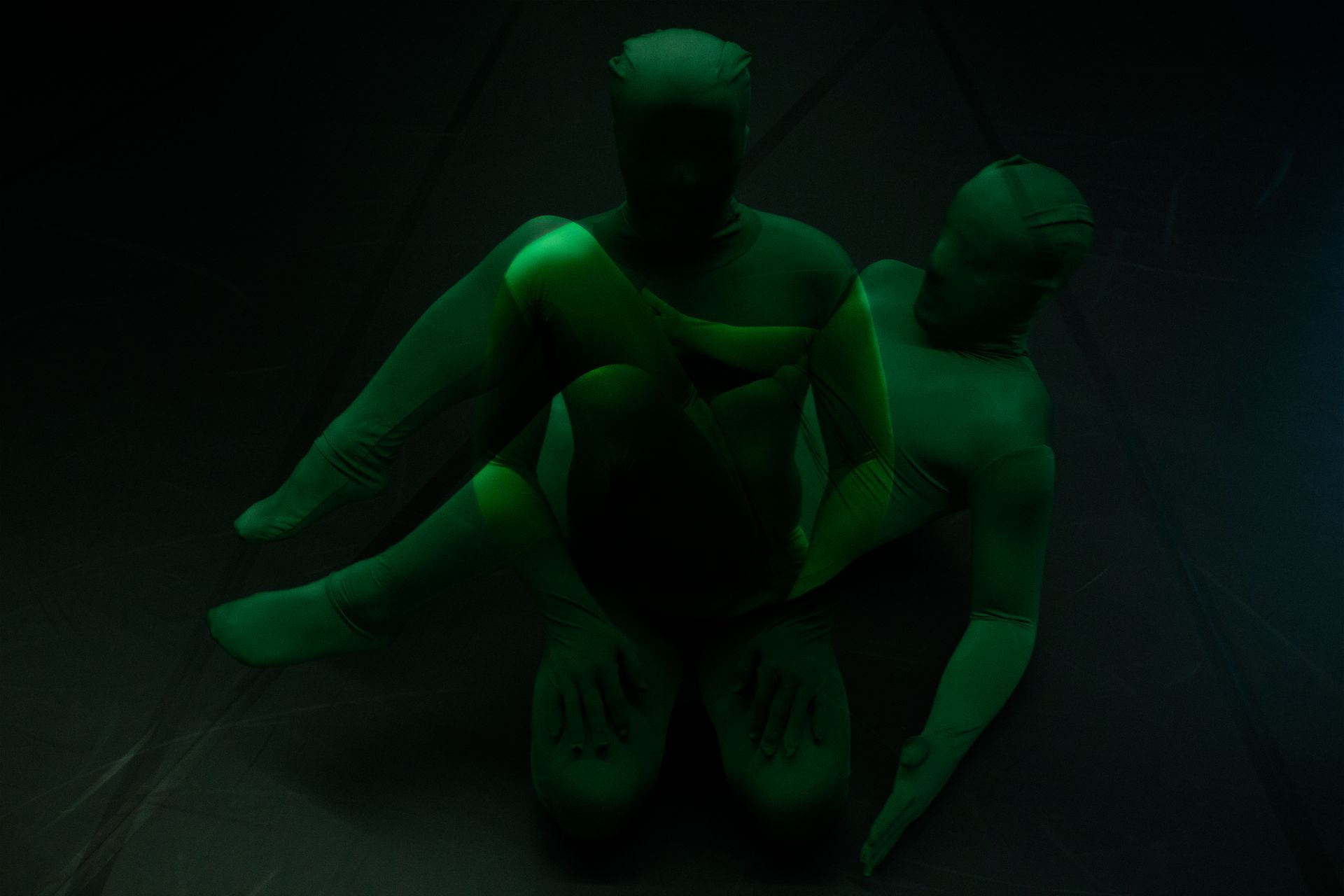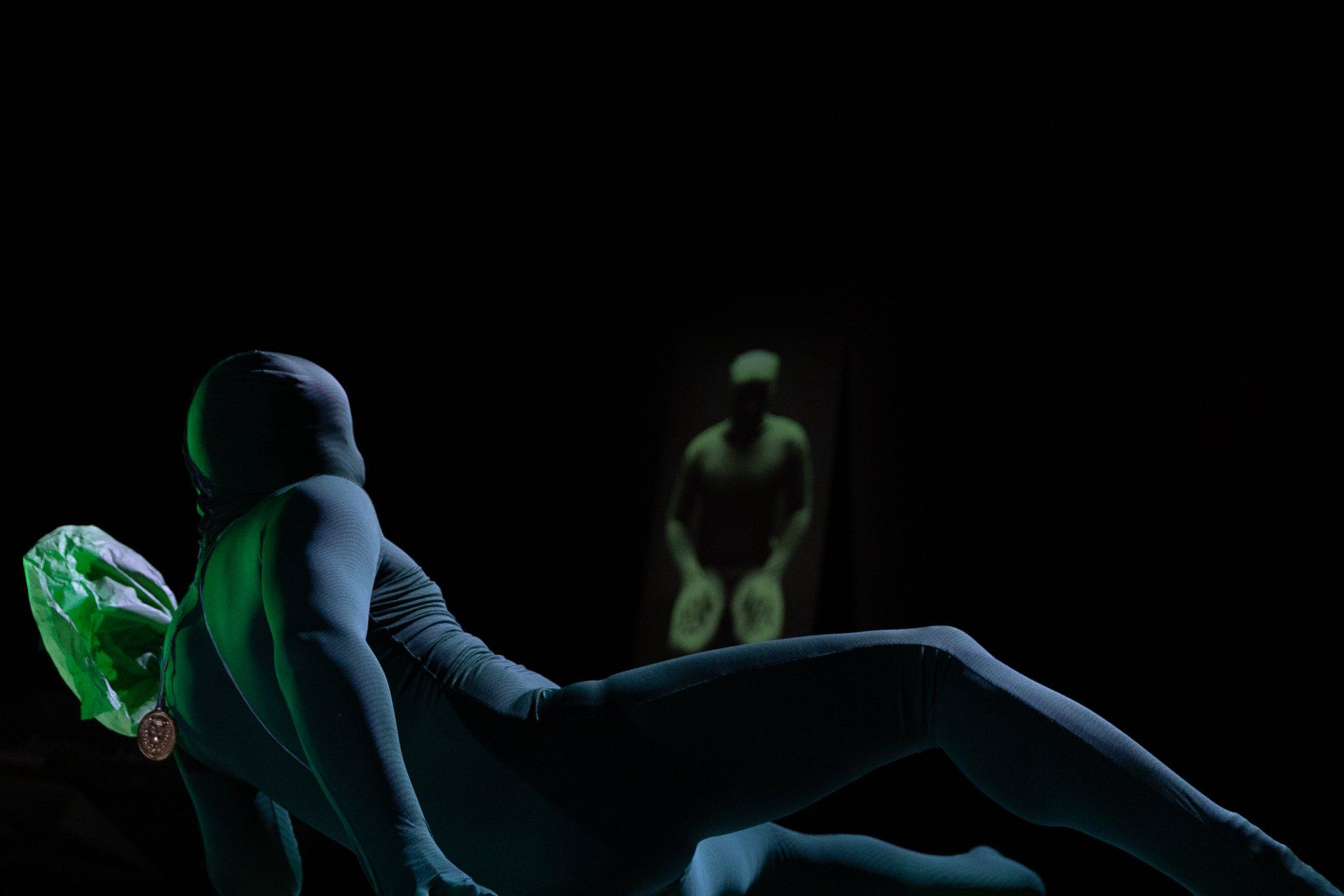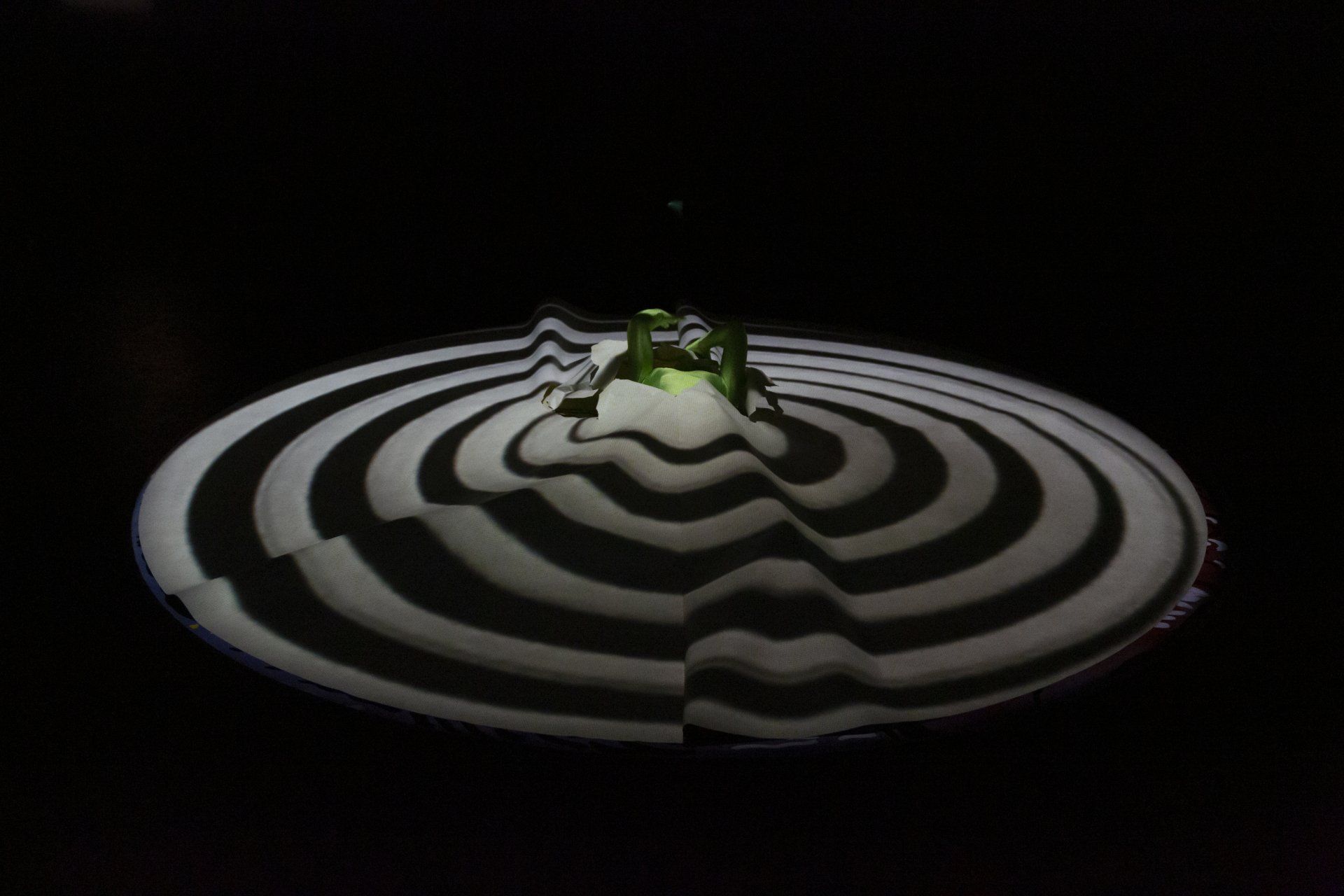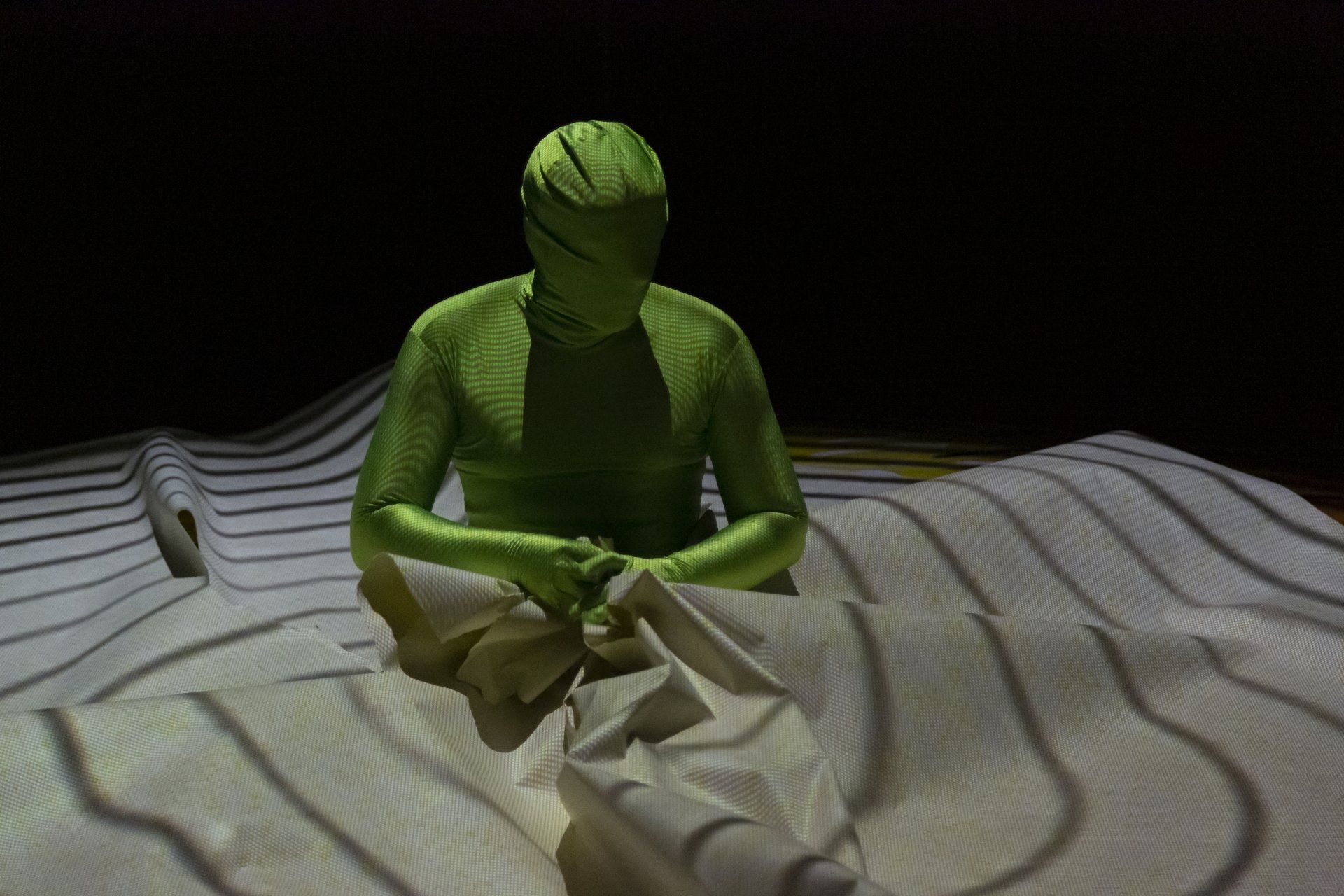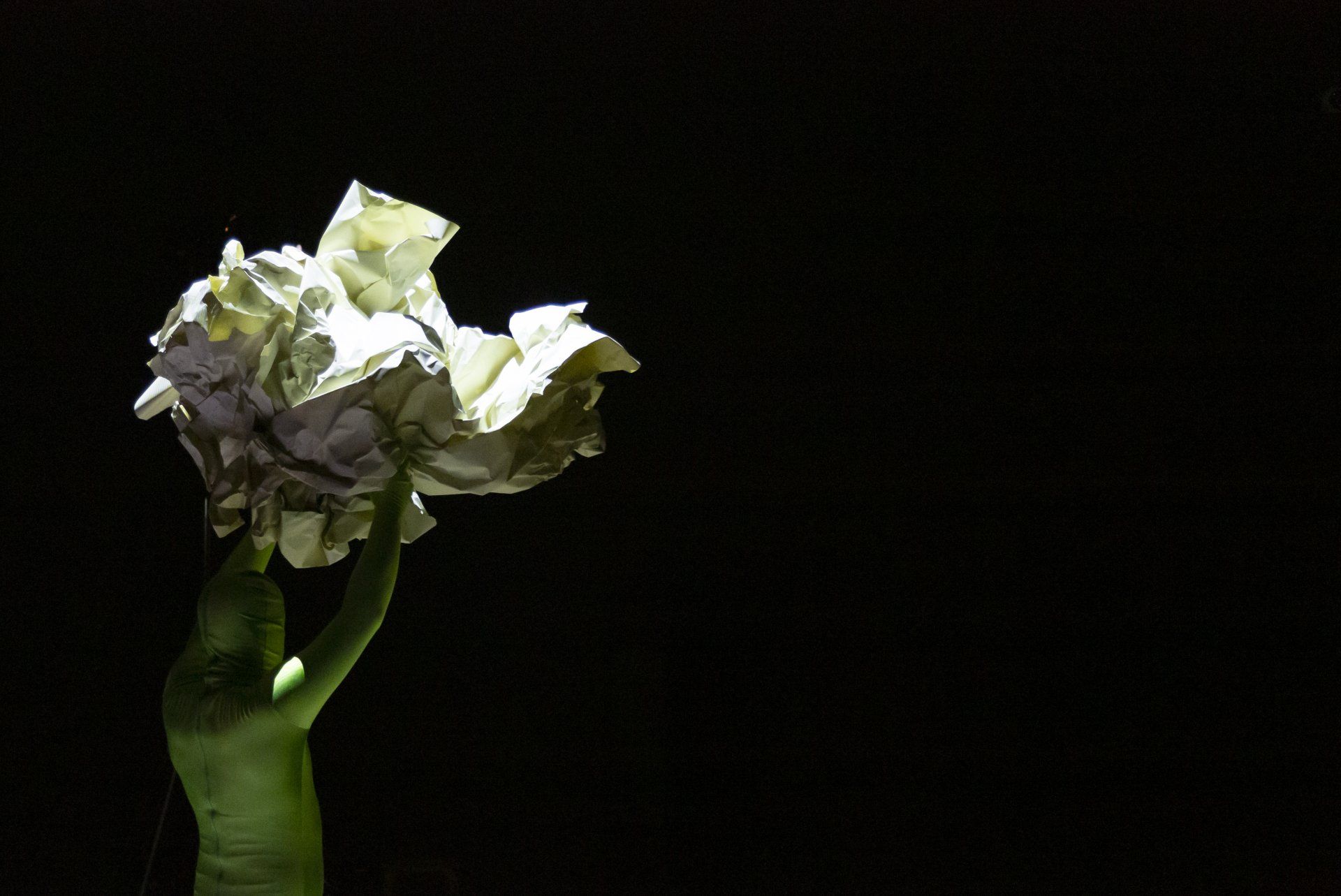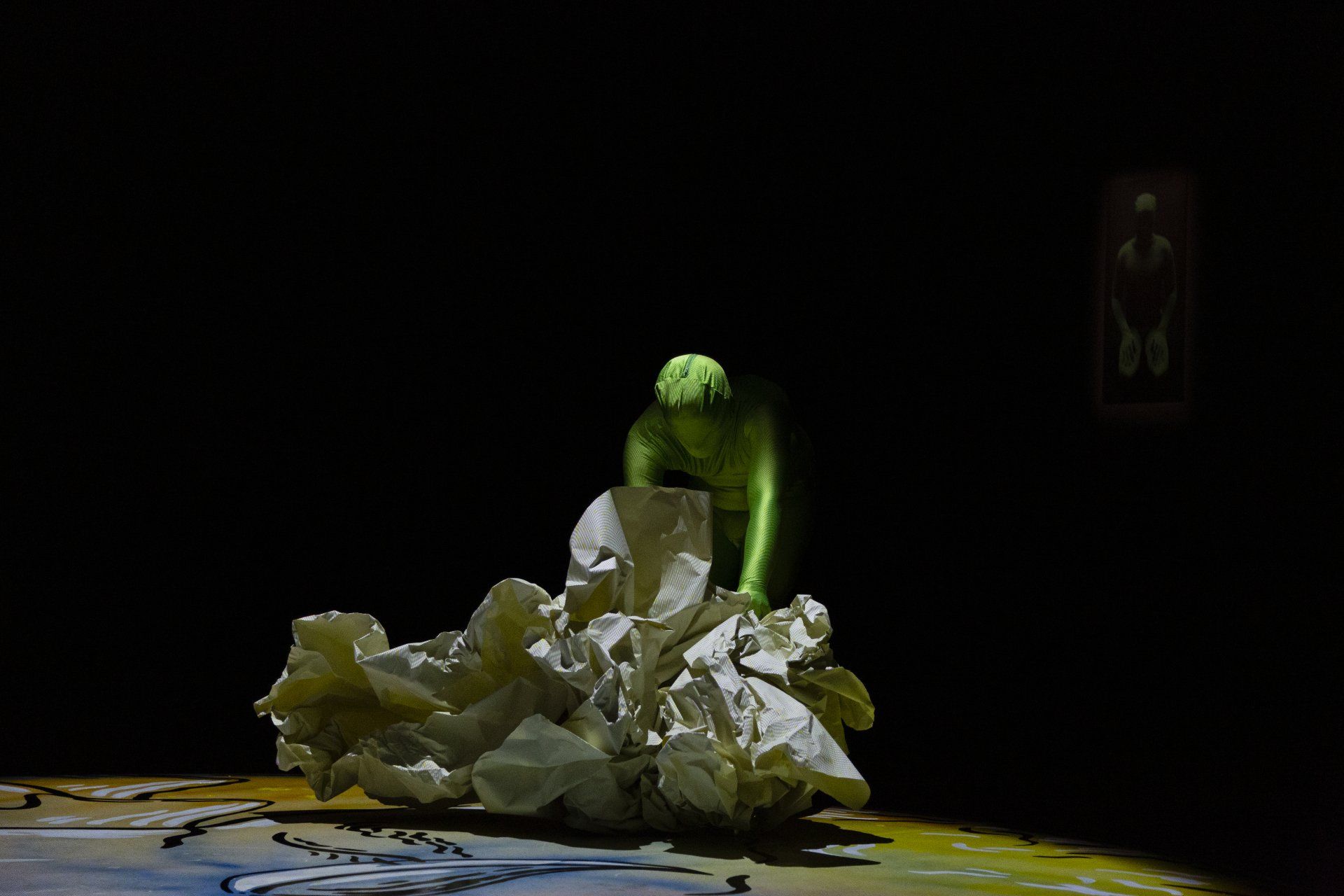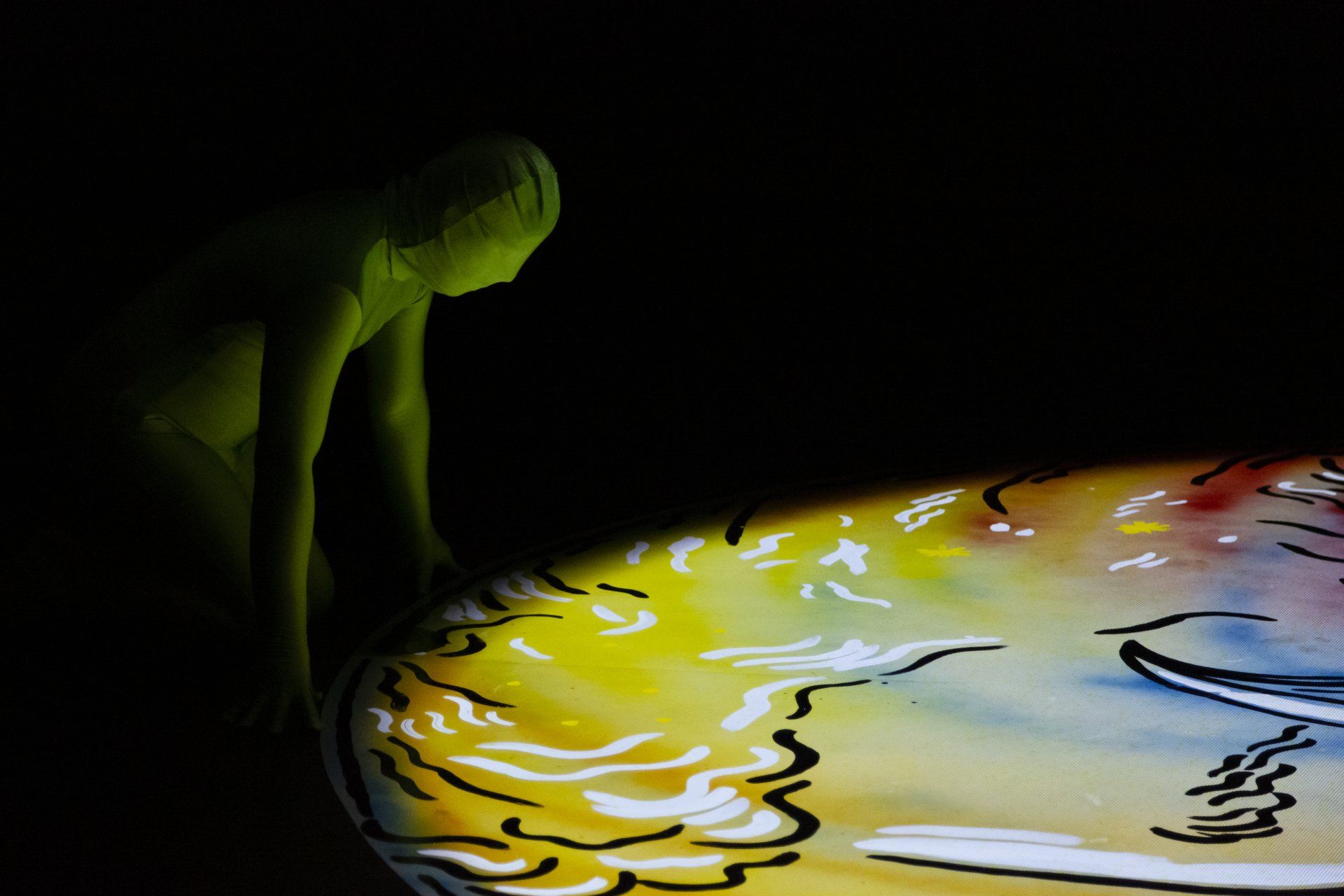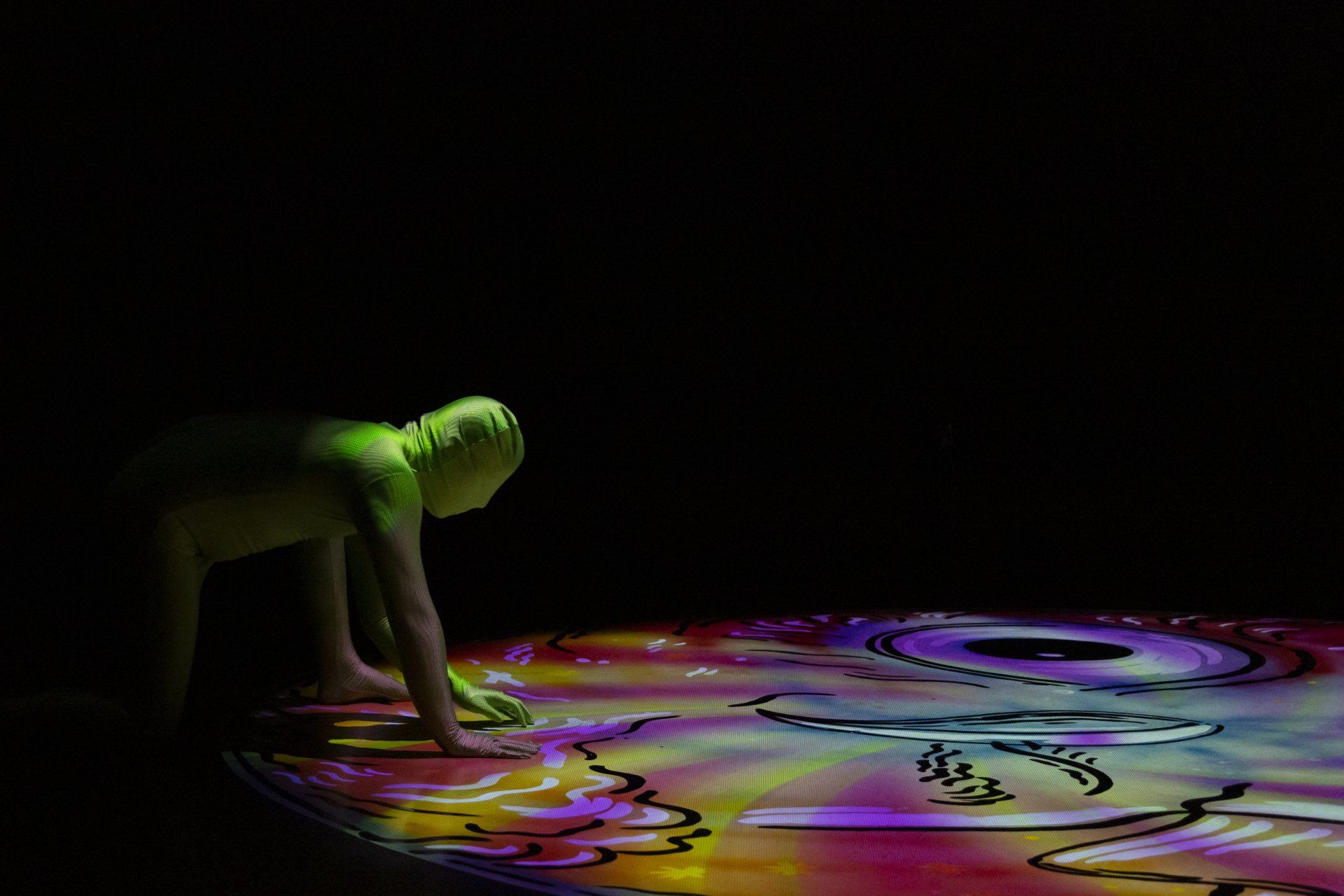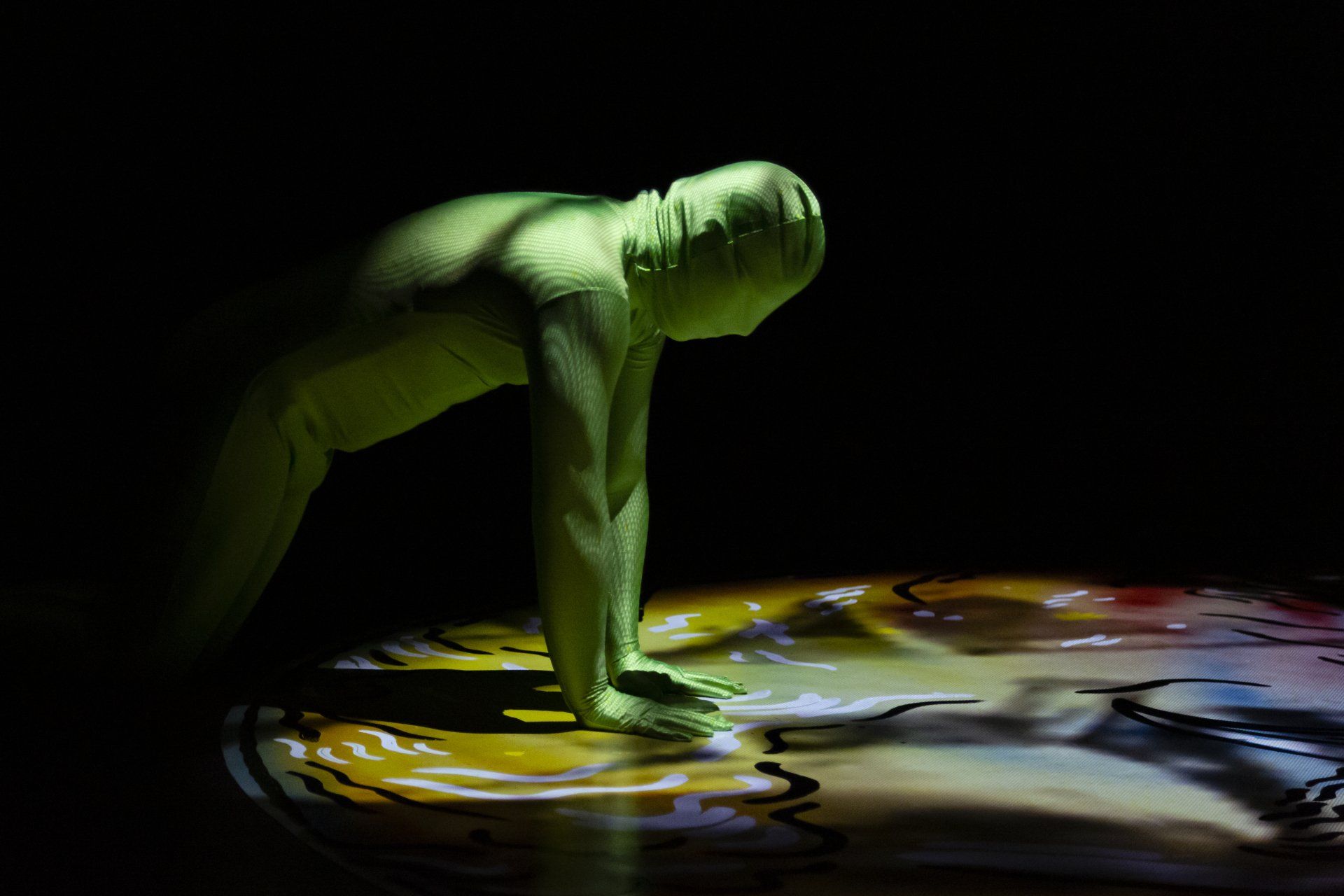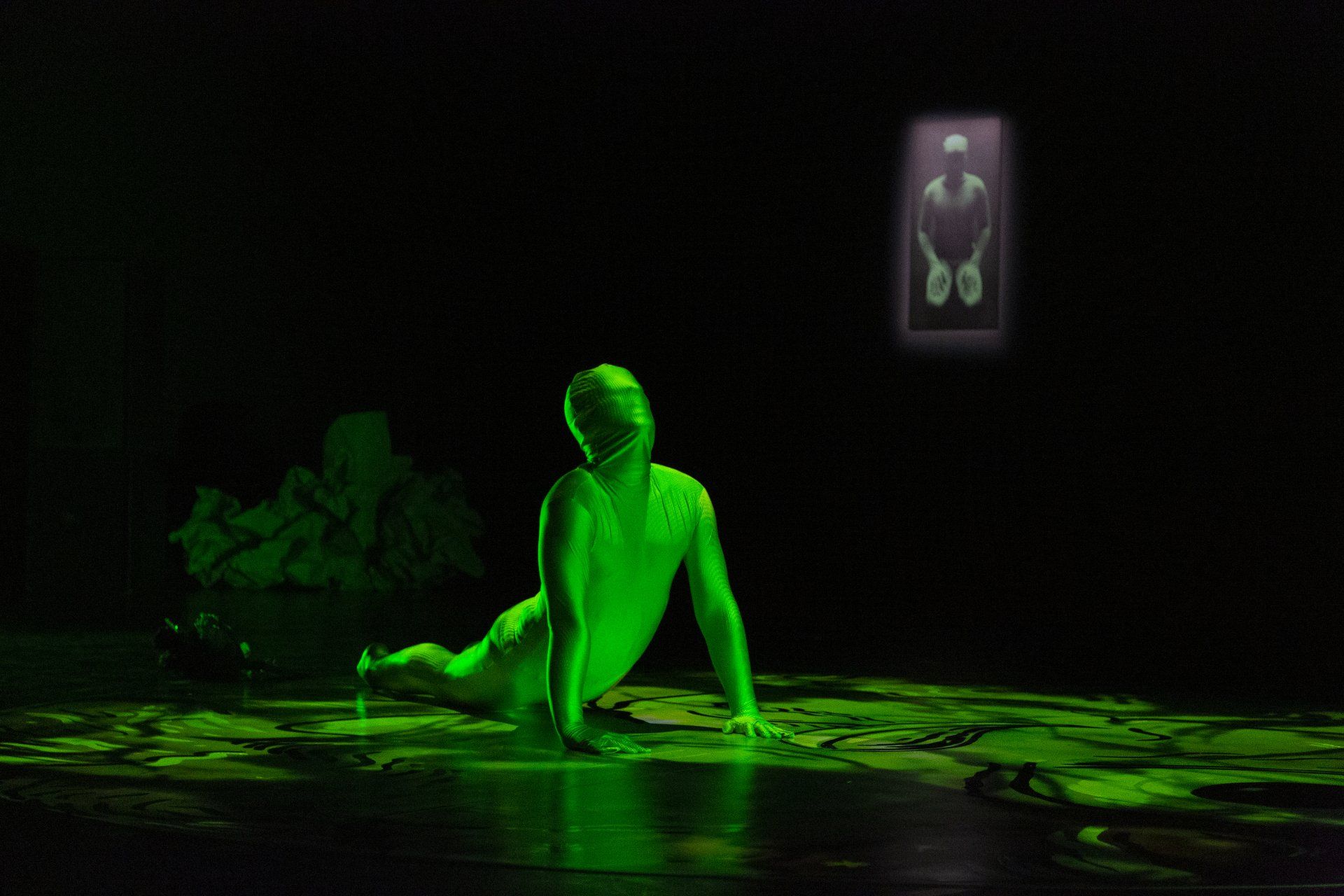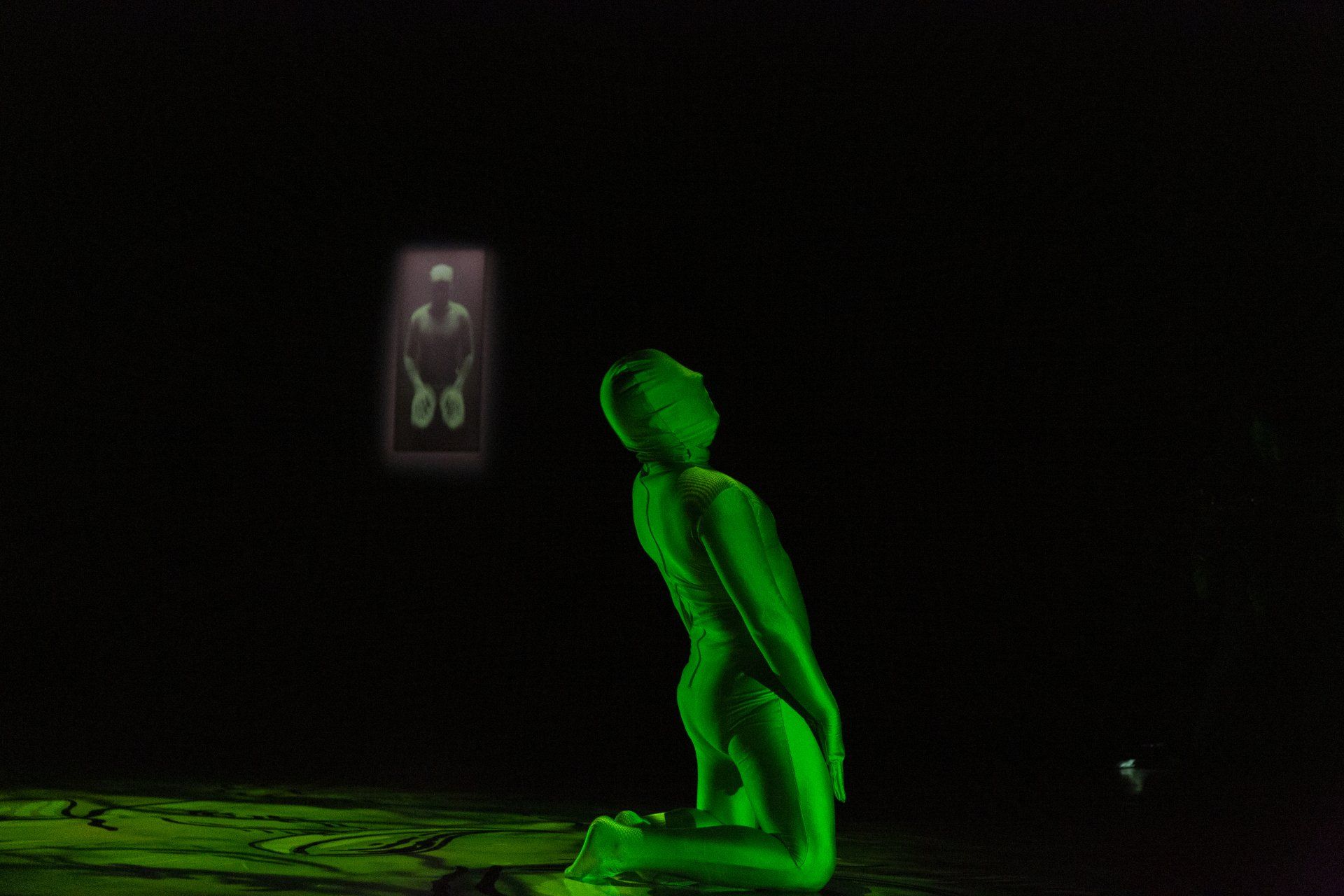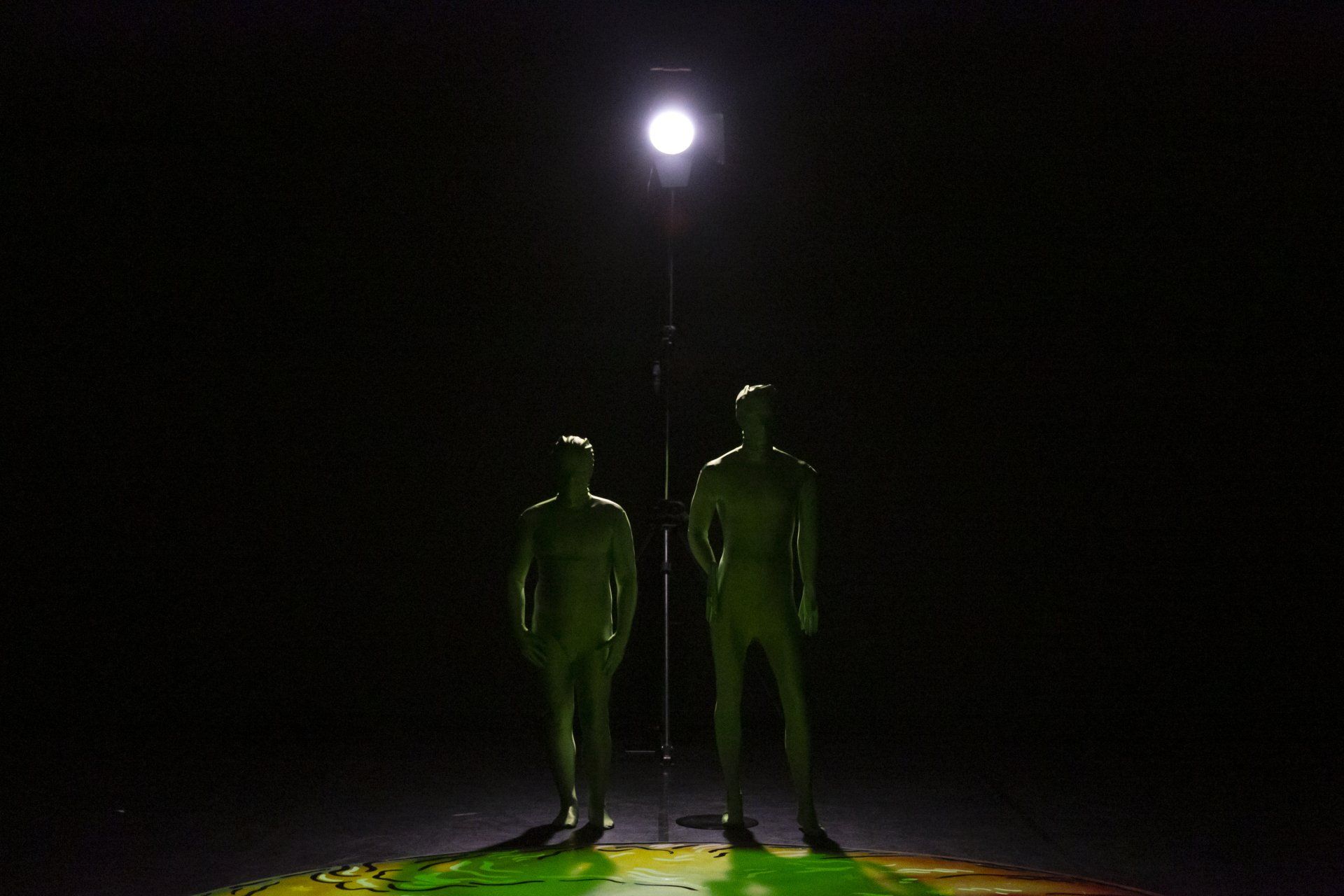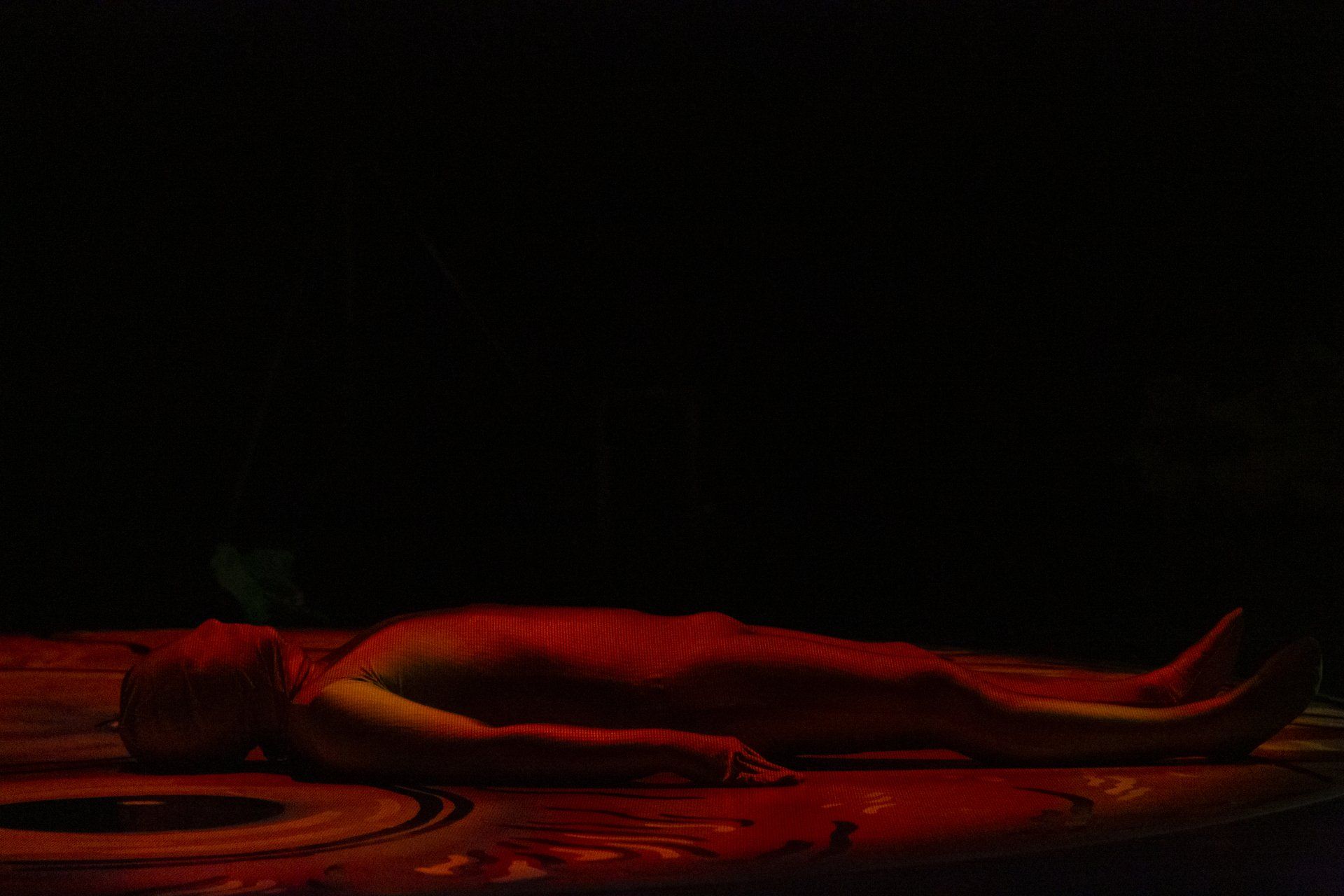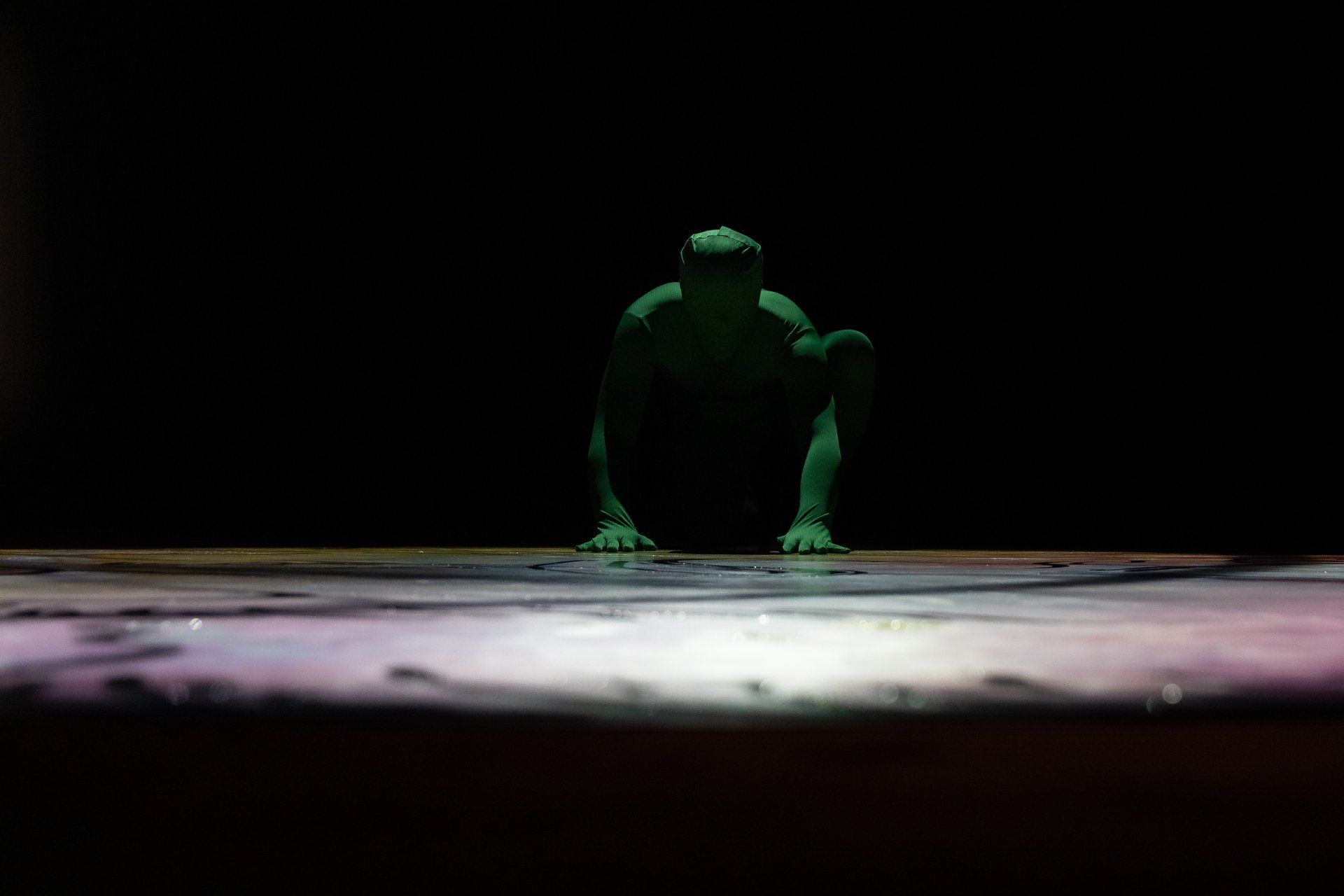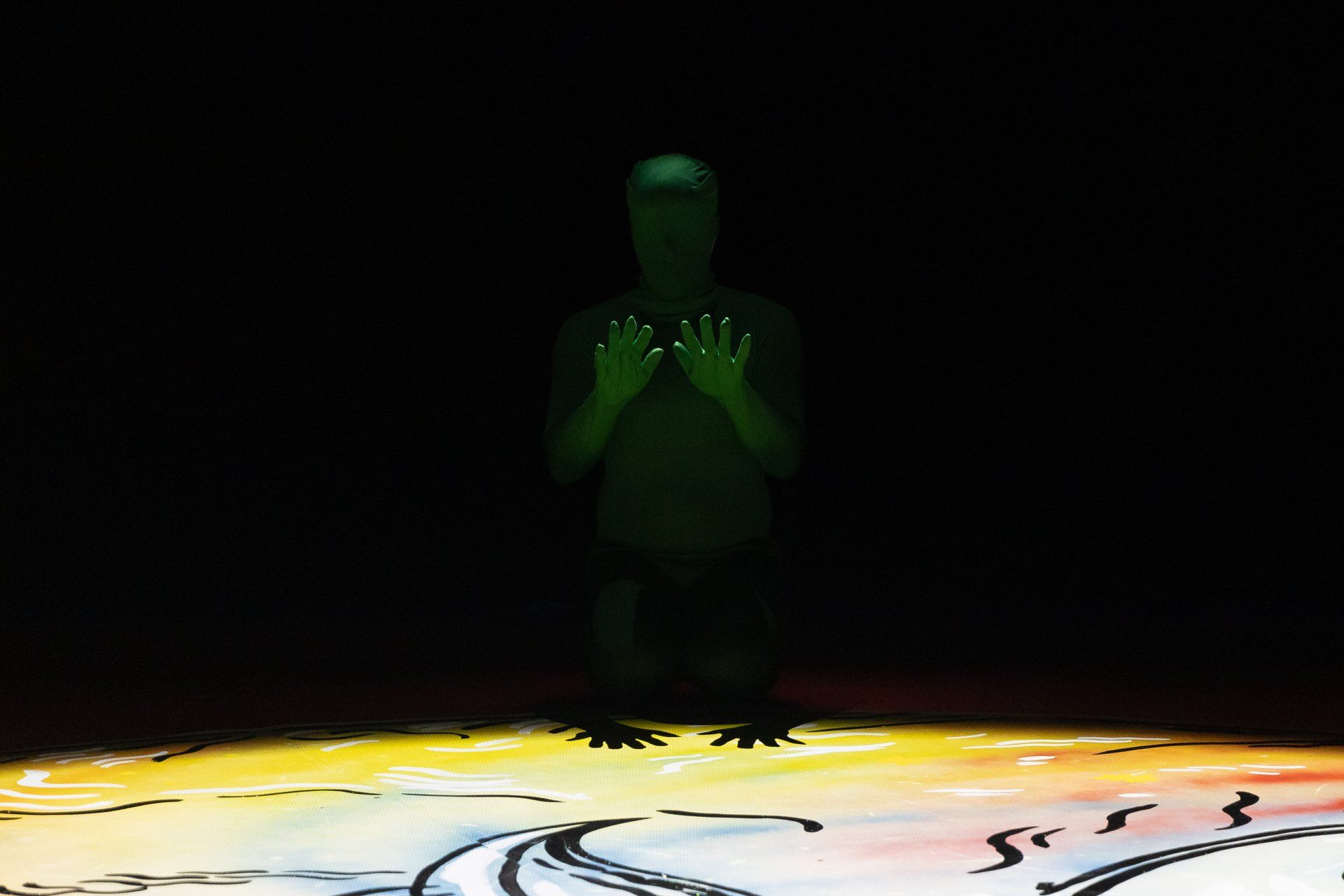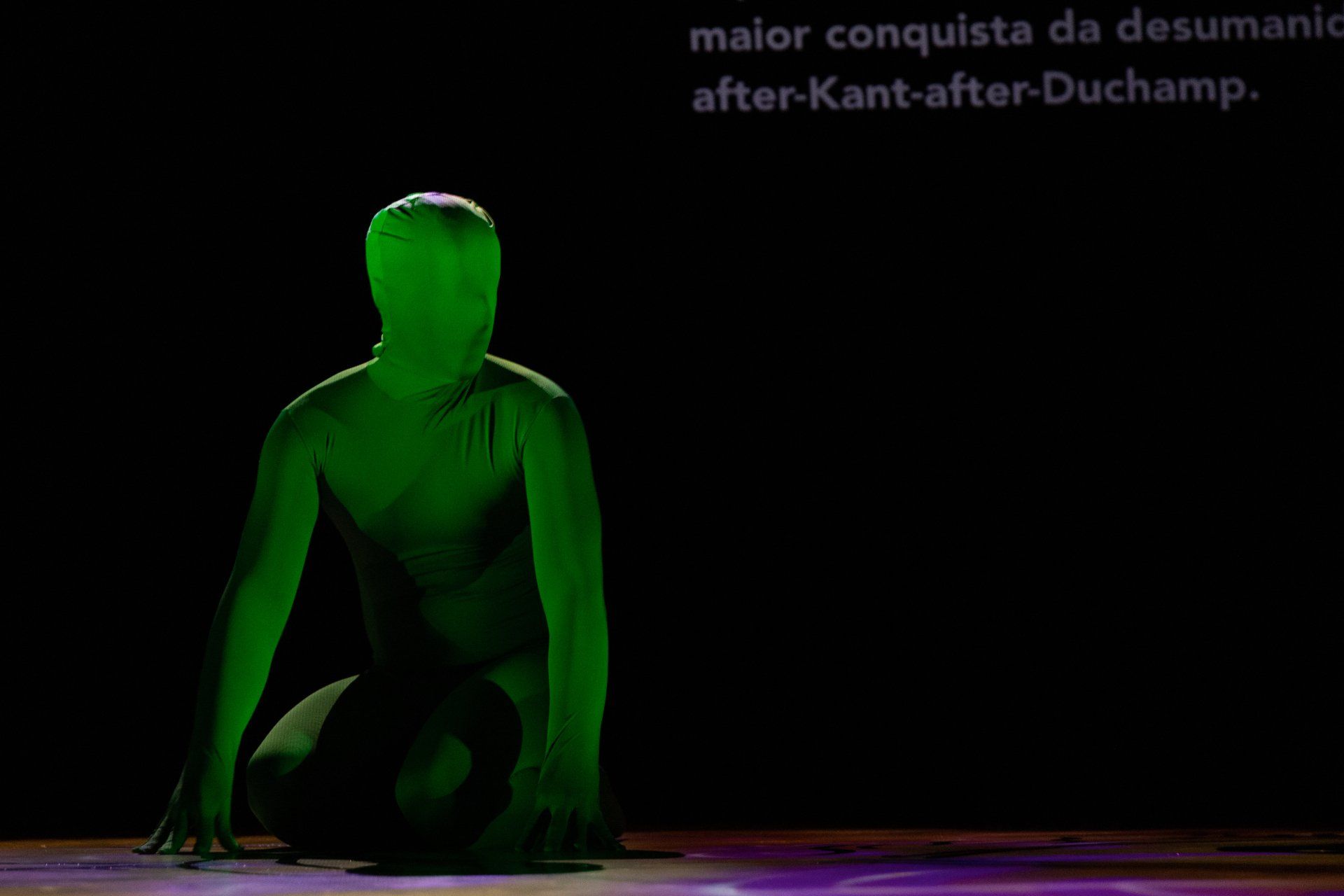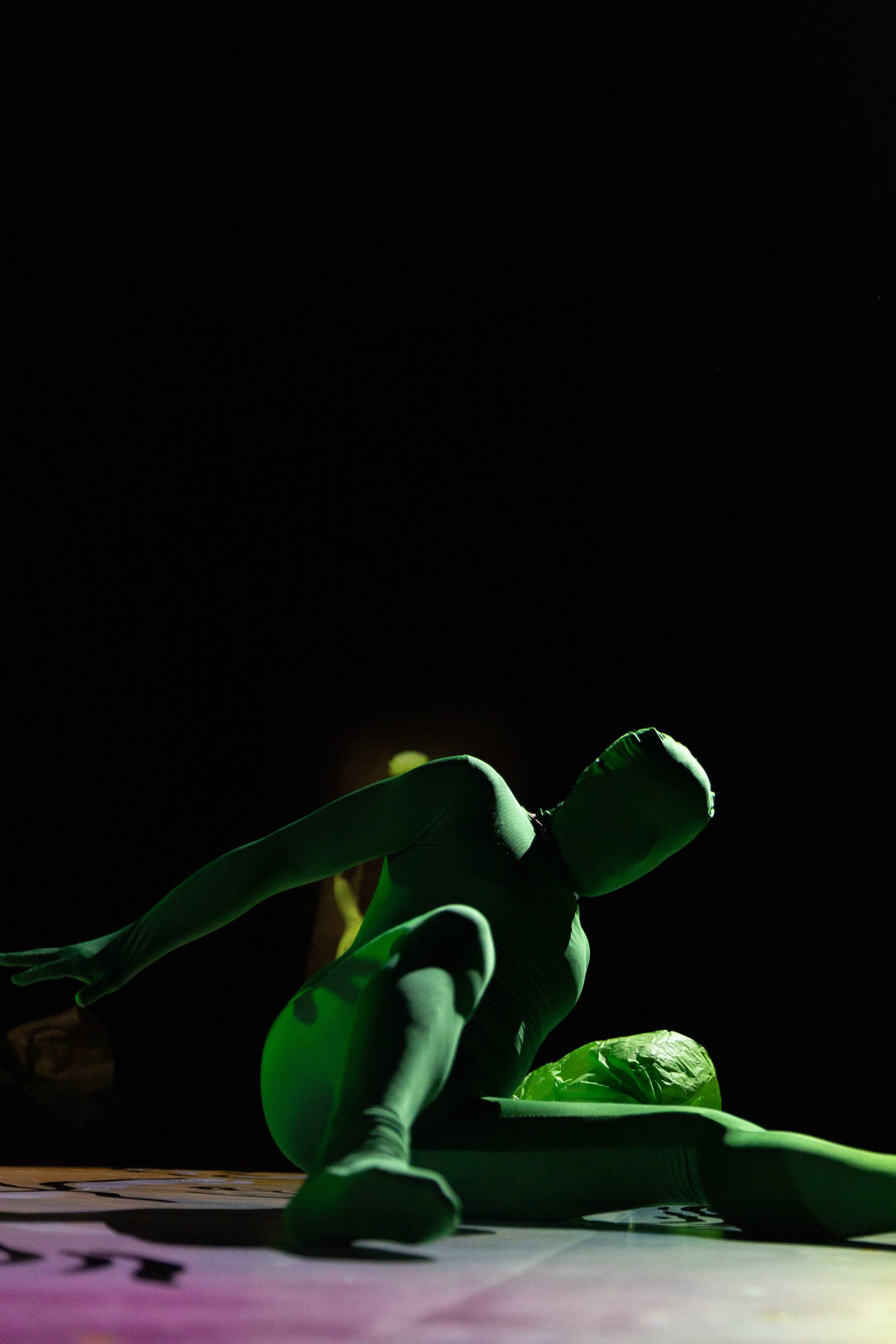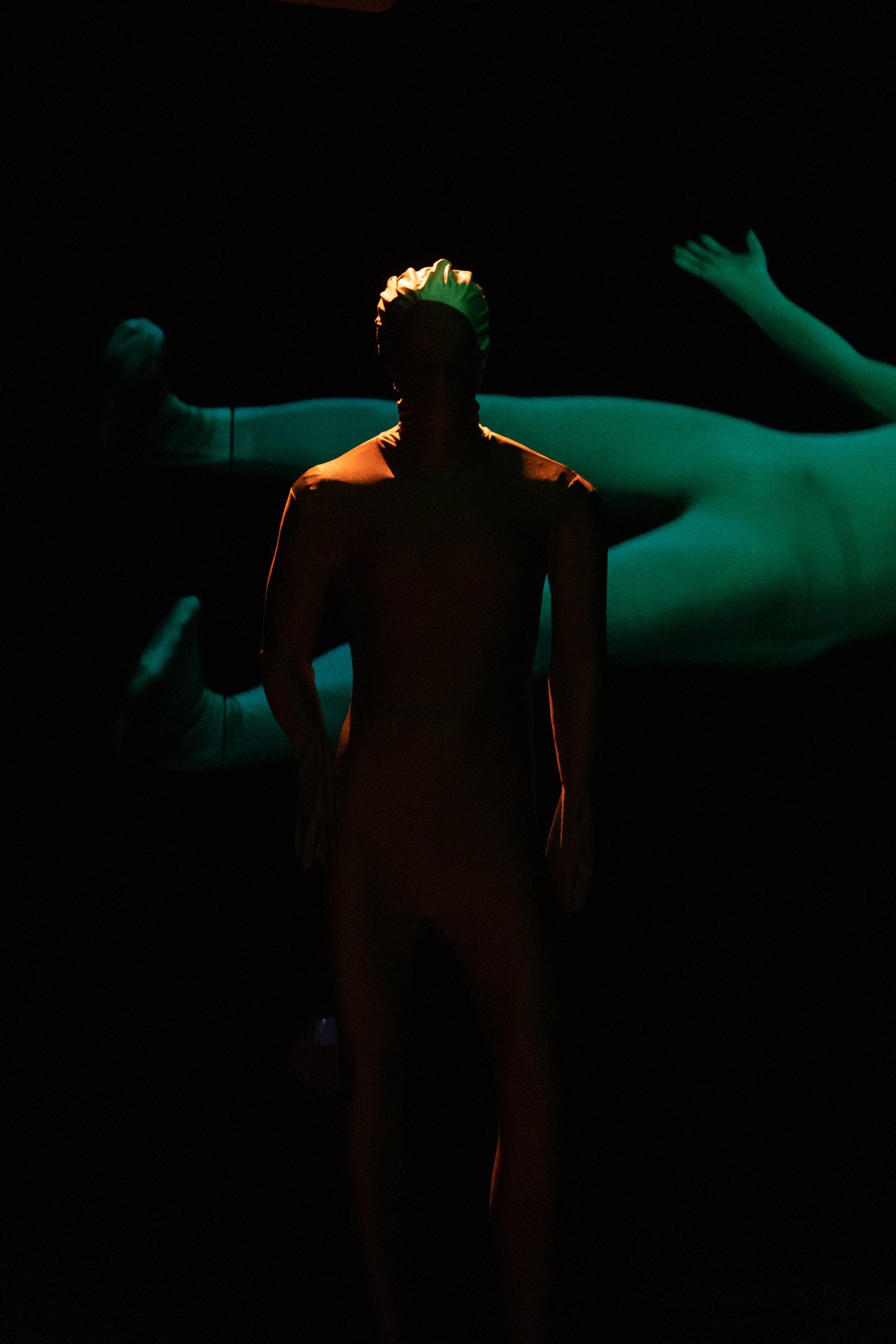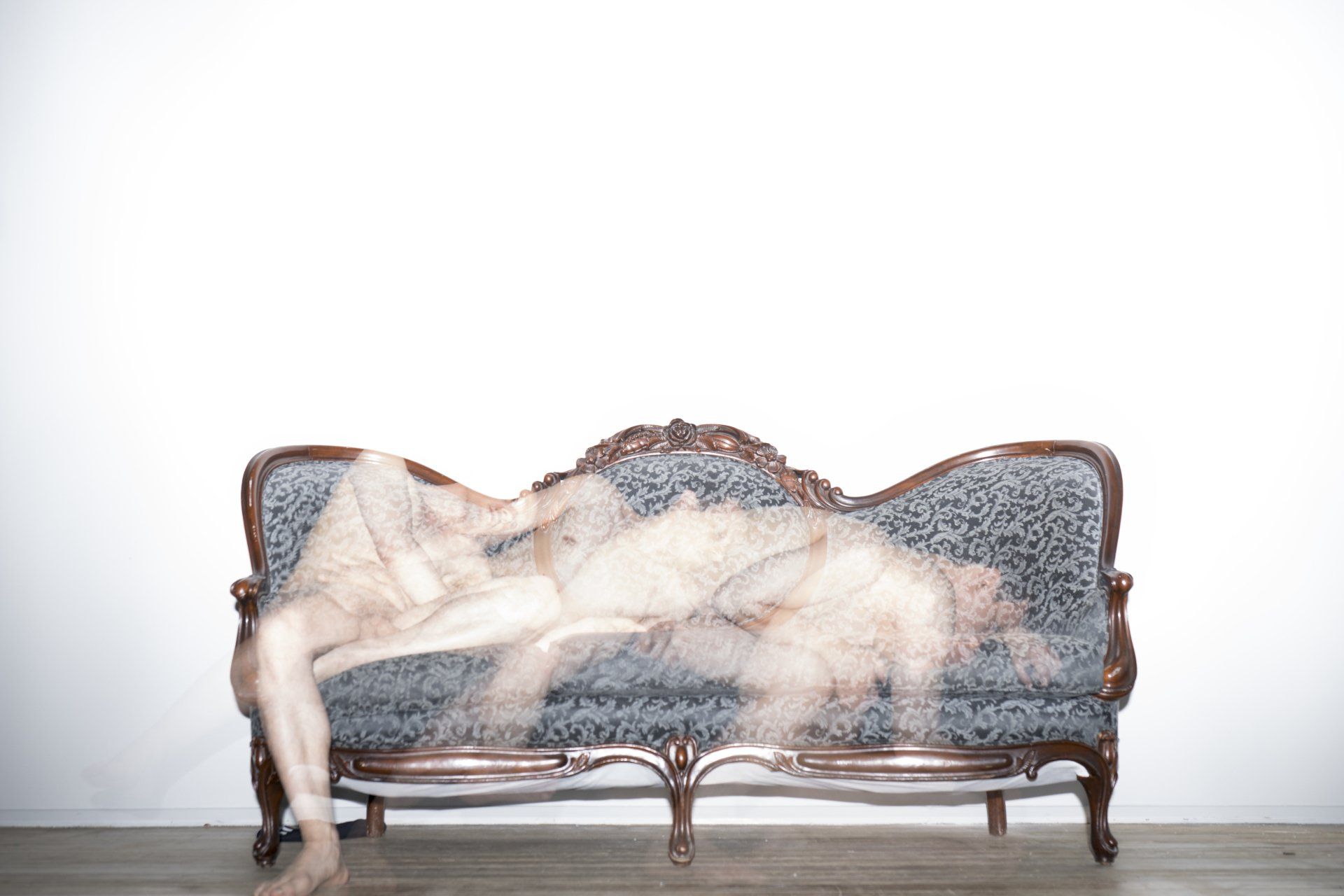Missed-en-Abîme
(2017-2021)
Starting Point
Missed-en-Abîme consists in a cross-disciplinary collaboration between artists from Portugal and Finland, corresponding to the final phase of an ongoing research project on the intersections of Art, History and Solitude, that
Rogério Nuno Costa has been developing since 2015, spanning the fields of philosophy, literature, geography and psychology. The performance’s structure is based on a semi-autobiographical/semi-chronicle text, suggesting a critical re-writing of art history’s hegemonic narrative (post-Duchamp’s Fountain) by the means of a queer, non-normative lens. The project comprises a performance/installation (meant to be performed in the contemporary art museum space), a concept book and a short film. Taking the poetics of the solitary artist as a visual, literary and dramaturgical starting point, the piece builds on a dialogical monologue, multilingually written in Portuguese, French, English and Finnish. Alongside the textual object as the performance’s central element, commissioned audio-visual works are featured: Portuguese visual artist Luís Lázaro Matos, Finnish sound artist Niko Skorpio, Finnish light designer Kristian Palmu and Portuguese art historians and pedagogues Andreia Coutinho and Maribel Mendes Sobreira (Colectivo FACA). By the interconnection of text, movement and projected light/video, the piece aims to initiate a dialogue between fields, a proposition for the building of an artistic buffer zone, a secluded experimental laboratory where a group of artists can test the possibility of solitude one might experience while being together. In other words: the building of a “solitary togetherness”, ultimately questioning the primary notion of working collectively. At last, Missed-en-Abîme aims to rhetorically (re)construct the alternate history of those silenced, oppressed or invisibilized. A literary eulogy to failure (d’après Judith Halberstam) through self-chosen isolation; not a selfish individualism, rather a “conceptual isolationism”. A healing through suffering. An ascetic and mystical experience.
Further Conceptualisation
In 1917, Marcel Duchamp writes
1917 in an upside down urinal. In 1919, he draws a moustache in the most important portrait of the history of art, not the original one (he’s not Banksy), not even a reproduction (Pop was yet to be invented), but a portrait he painted himself, copying the “original”, and, by doing so, almost repeating Melville:
I would prefer not to. In 1921, Man Ray photographs Duchamp as
Rrose Sélavy, thus completing the full circle, or else paving the way for the artist’s disappearance. A century later, we still don’t know how to deal, historically and artistically, with these radical endeavours, sometimes discrediting them (or assigning them new authorships...), sometimes assuming a somewhat insurmountable historical irresolution. More than clever attempts to revolutionise, shock or transgress the art world (or to prophesy the end of art
itself, some might have said…), these historical epiphenomena hide a more obscure quest for a self-imposed ostracism and loneliness.
MISSED-EN-ABÎME aims to talk about that (centennial) gesture which can be interpreted as destruction, revelation, or simply self-imposed ostracism, as if it was impossible to do
anything after having obliterated (almost)
everything. Duchamp spent decades doing “nothing”, the reason why Spanish novelist Enrique Vila-Matas decided to dedicate some footnotes to him in his novel about the
negative authors, those who have decided to stop pushing the pen and let their silence do the talking instead (Bartleby & Co., 2000): "One time, in Paris, artist Naum Gabo asks Marcel Duchamp the reason for having stopped painting.
Mais que voulez-vous?, answers Duchamp, raising his arms in the air.
Je n’ai plus d’idées!". Inspired by this impasse,
MISSED-EN-ABÎME ritualises a queer, sacrificial isolationism, thus daring to revisit Duchamp’s negligence while avoiding to find it a solution — « …parce qu’il n’y a pas de problème » —, rather accepting failure, withdrawal, invisibility and oblivion, perhaps also disappearance, as acts of survival and resistance. Central do the whole project, the autobiographic "performative text" appropriates Vila-Matas formula, asking: How can one write a
book which relies solely in the footnotes (of that same book)? How can one write an "invisible
text"? Footnotes do not just festoon the text; they
are the text. This strategy of providing the caption with as much importante as the captioned image, contains one of the most fundamental operations of my cross-disciplinary practice. In
MISSED-EN-ABÎME, I intend to amplify and expand that pattern, ultimately writing-as-performing an artistic statement about how can one perform an exercise of resistance to a commonplace —
theatre
as a literary, artistic and historical established order —, while embracing the
readymade dramaturgies of our tragic everyday life: deviation, disruption, forgetfulness, loss... The
queer art of failure transforming into
the queer art of not even trying.
Rogério Nuno Costa, 2020
Photography
¶ Serralves Contemporary Art Museum, The Museum As Performance, Porto, Portugal, September 2021. Photos by © Miguel Refresco
¶ Museu Coleção Berardo, Festival Temps d'Images, Lisbon, Portugal, November 2021. Photos by © Alípio Padilha
M I S S E D - E N - A B Î M E
Written, directed, edited and performed by Rogério Nuno Costa. In collaboration with Luís Lázaro Matos, Kristian Palmu, Niko Skorpio, Colectivo FACA (Andreia Coutinho & Maribel Mendes Sobreira), Jani Nummela, Pie Kär, Miguel Refresco and Inês Carvalho e Lemos.
Financial support: República Portuguesa - Cultura / Direção-Geral das Artes. Co-production: Teatro Viriato (Viseu) and MUDAS. Museu de Arte Contemporânea da Madeira (Funchal). Mobility Support: TelepART - Instituto Iberoamericano de Finlandia.
Residencies (Research and Creation): Rua das Gaivotas 6 (Lisbon), Là-Bas Studio/Kaapelitehdas (Helsinki), Aalto University School of Arts, Design and Architecture (Espoo), Cité Internationale Universitaire de Paris – Maison du Portugal (Paris), CAMPUS Paulo Cunha e Silva (Porto). In-progress presentations: Museum of Impossible Forms (Helsinki), Parfums de Lisbonne (Paris).
Tour: Serralves Contemporary Art Museum (Porto, premiere), Festival Contradança (Covilhã), Festival Temps d’Images/Museu Coleção Berardo (Lisbon), Teatro Viriato/Festival END (Viseu), Teatro-Cine de Torres Vedras (Torres Vedras), Chão de Oliva/Festival Periferias (Sintra), MUDAS (Calheta, Madeira).
With the support of: A Bela Associação (Almada), CAMPUS Paulo Cunha e Silva (Porto), Estrutura (Porto), Ballet Contemporâneo do Norte (Sta. Maria da Feira), Teatro Feiticeiro do Norte (Funchal).
Psychobiography of a Losing Hero
_artist book_
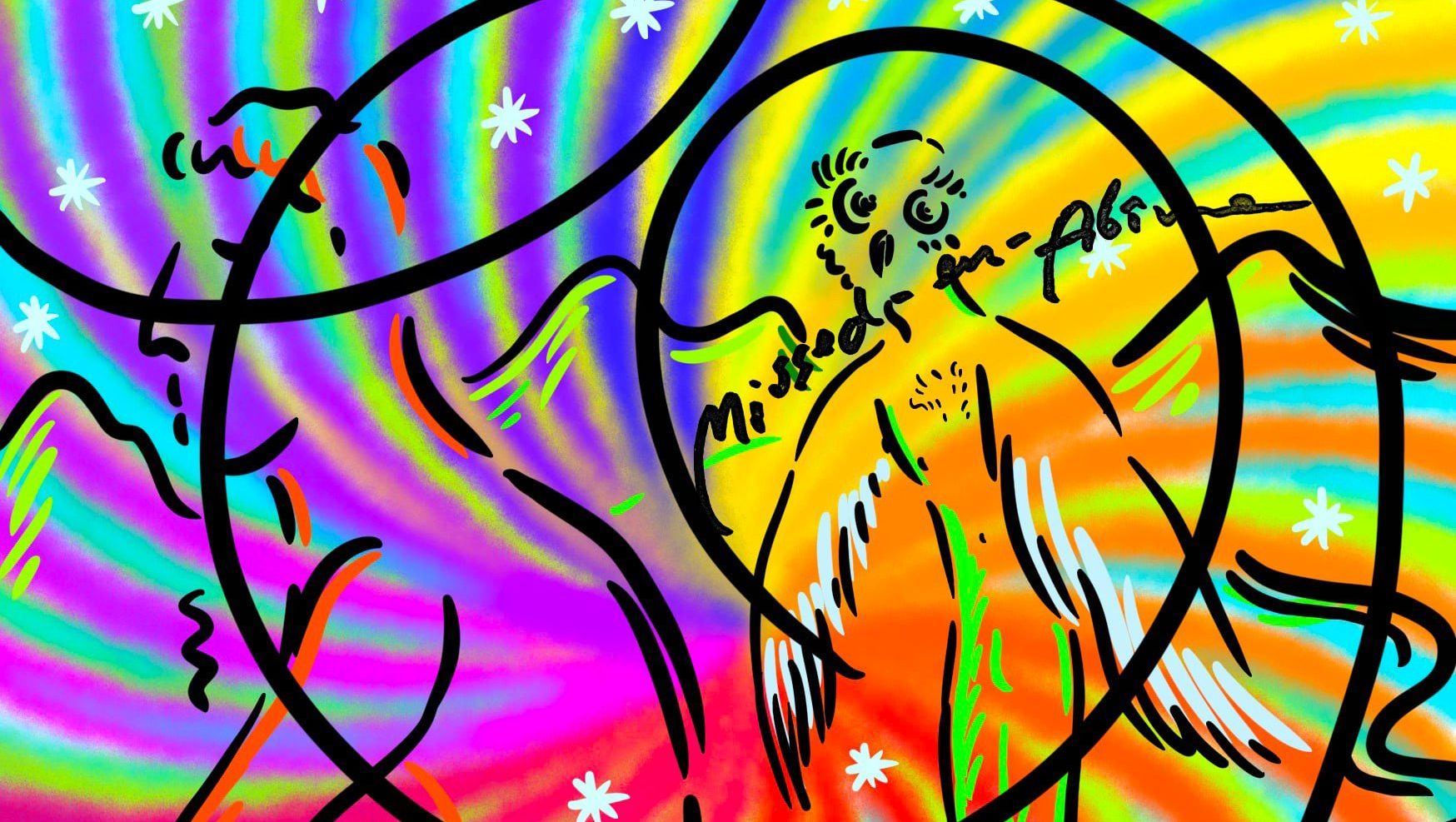
"
Sometimes he is overwhelmed by brief moments of clairvoyance, when he acknowledges that the line he is crossing, which appears straight, is in reality a micro-part of the grand circum-negation voyage that he, anti-heroically, has ventured to undertake. Backwards, and in a circle. With no retroactive correction of reality. Only meltdown and immensity. Our Heroic Loser exists because he is invisible. Half-exists. This, he says, is a projection. A pain postponed. And there he remains, reflecting himself in the mirror of the World, in a diabolical drift, a restrained submission. He remembers the Friends who taught him, throughout the inverted funnel that has been his life, that what pains the birds is not that they’re shot, but that, once shot, the hunter doesn’t notice them fall.
"
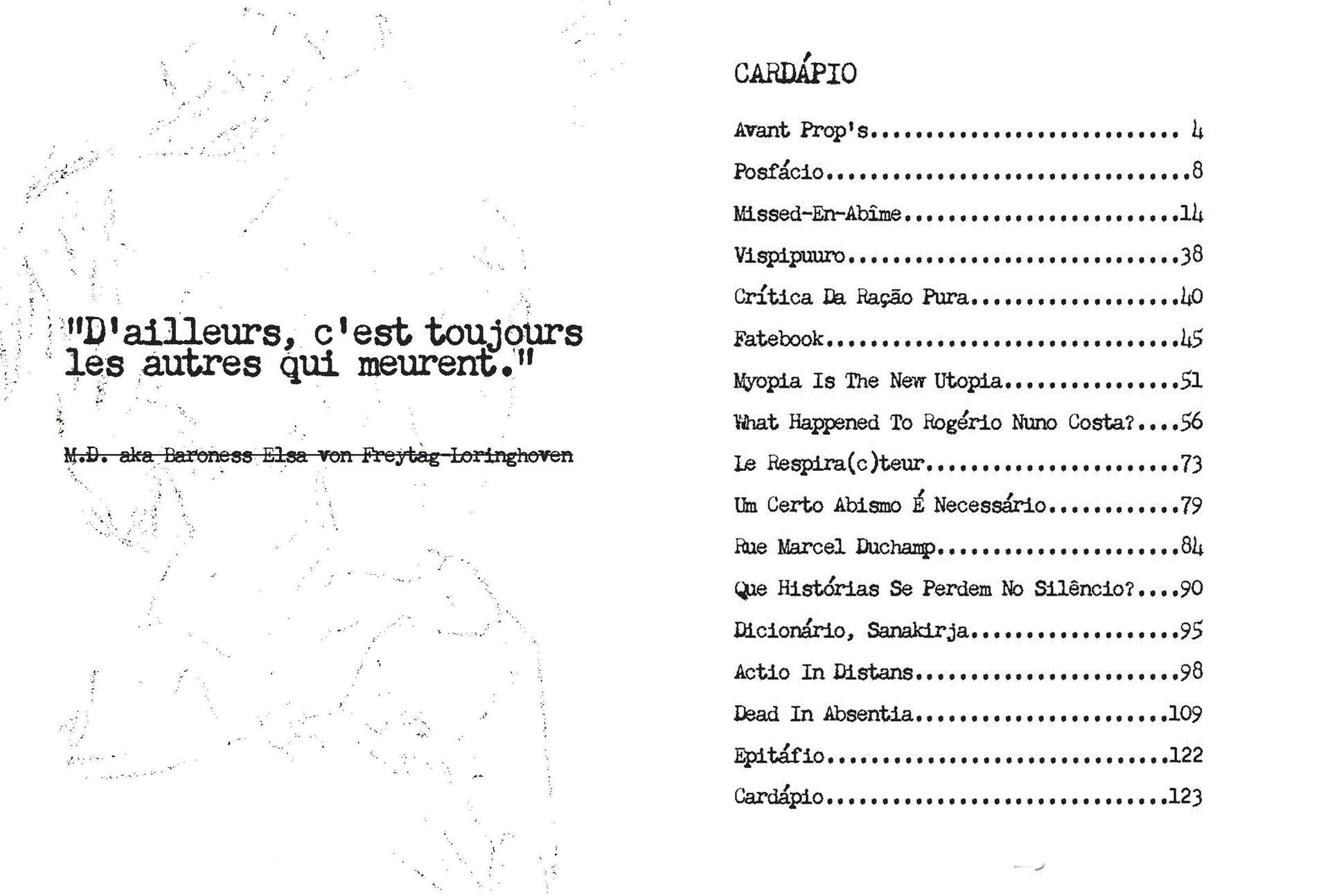


Contributions (Textual/Visual/Both):
Alípio Padilha, Ana Rito & Hugo Barata, António Olaio, Colectivo FACA (Andreia Coutinho & Maribel M. Sobreira), David Pissarra, Eduarda Neves, Graça dos Santos, Jani Nummela, João Pedro Azul, Luís Lázaro Matos, Miguel Refresco, Rogério Nuno Costa.
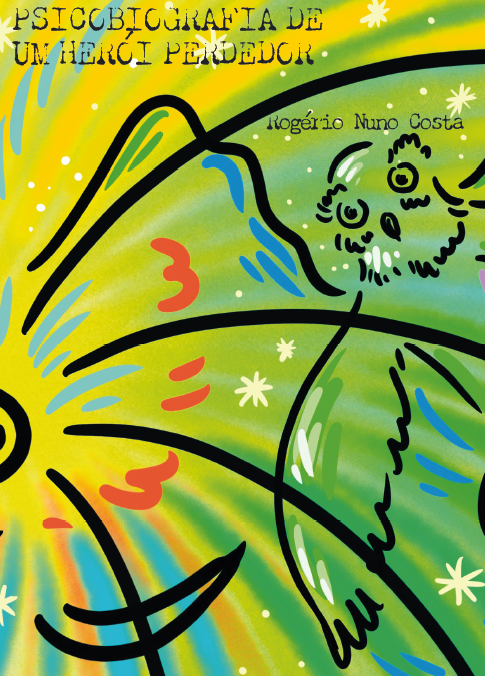
"Which histories are lost in silence?"
Colectivo FACA
_workshop_
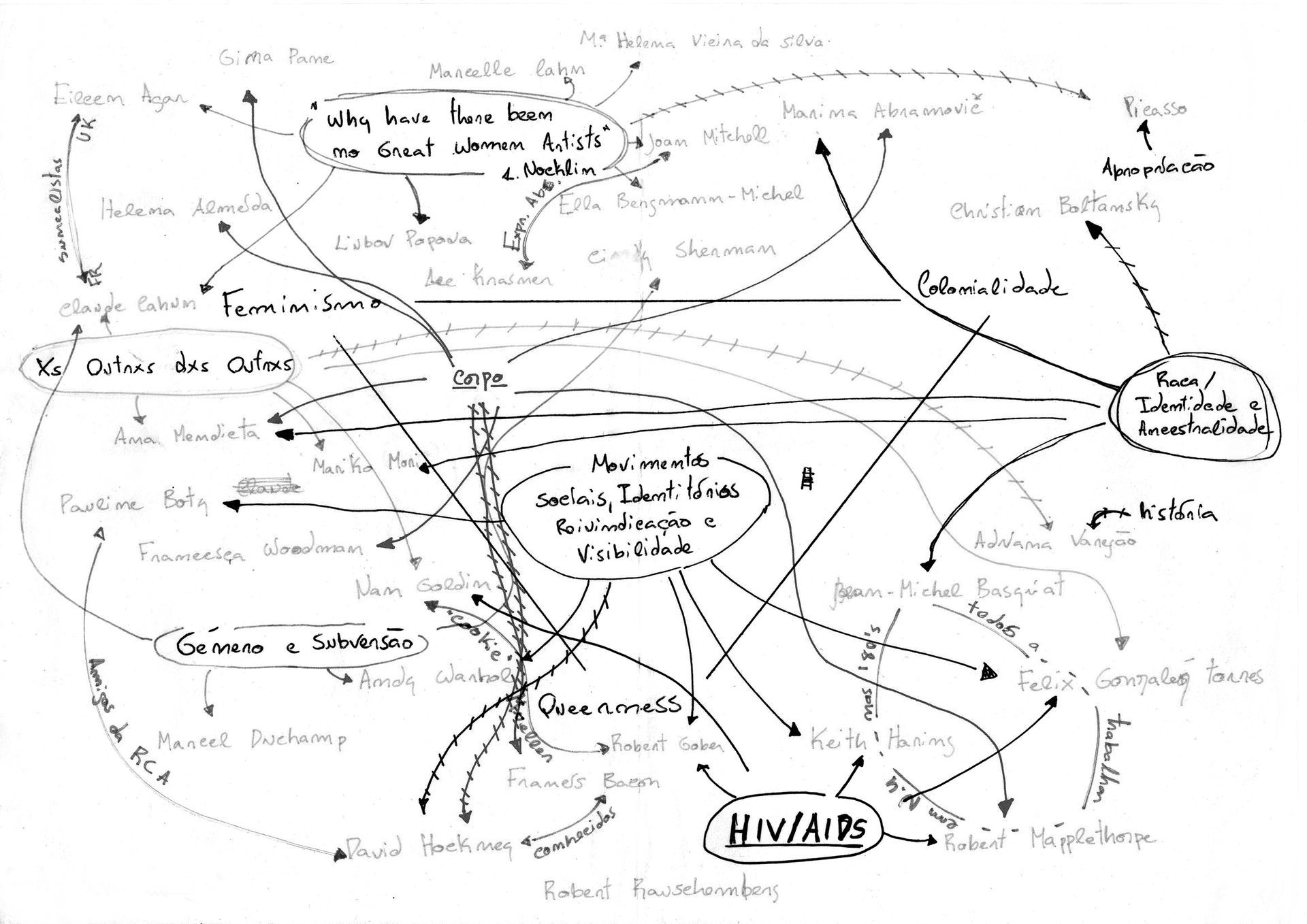
Um workshop do Colectivo FACA (Andreia Coutinho e Maribel Mendes Sobreira) em diálogo com a performance/instalação “Missed-en-Abîme”, de Rogério Nuno Costa
Começaremos com a premissa do jogo: quem perde e quem ganha? Que dados são usados pelos jogadores? Para isso partiremos da ideia de Duchamp que “(…) a posteridade estabelece o seu veredicto final e, por vezes, reabilita artistas esquecidos”, para entendermos em conjunto como é que partes invisíveis se mostram, e que possibilidades podem surgir nesse desilenciar que se ligam à ideia de herói perdedor. Nesta perspectiva, olharemos para as obras de arte através do órgão do silêncio, que histórias não nos contam quando nos fixamos na camada superficial da sua visibilidade? O que significa a dicotomia visível-invisível do nosso herói perdedor? Neste workshop, falaremos dos percursos artísticos e de vida pouco mencionados pela História hegemónica que silencia, e obriga a silenciar, outros corpos e as suas produções inacabadas. Toda a história é centrada na construção de um génio e de um herói, mas quem perde quando os silêncios que foram inviabilizados se visibilizam? Venham jogar connosco ao herói perdedor!
&&&
O Colectivo FACA é um projeto de cidadania ativa constituído por Maribel Mendes Sobreira e Andreia Coutinho. Desenvolve trabalho com uma vertente curatorial e educativa com vários públicos, ampliando a perspetiva acerca do outro e a História, propondo discussões, exposições e visitas guiadas para propor o pensamento em torno das temáticas do feminismo, colonialismo, racismo, LGBTQI+ e não normatividade no contexto da cultura visual. Maribel Mendes Sobreira é arquiteta com pós-graduação em Património Urbano, mestre em Filosofia e doutoranda em Filosofia (FLUL) na área da Estética e Filosofia da Arte, com uma bolsa de investigação da FCT. É membro dos International Society for the Philosophy of Architecture e Centro de Filosofia da Universidade de Lisboa. Coordena o Núcleo de estudos Simmelianos da Universidade de Lisboa. Tem publicado artigos na área da reflexão sobre a arquitetura, património urbano e teoria da arte. Concebe e orienta atividades de sensibilização para as artes e arquitetura, colaborando com o Museu Coleção Berardo desde 2007. Andreia Coutinho é mediadora educativa e ilustradora. Licenciada em Pintura pela FBAUL e Master of the Arts em Ilustração pela Kingston University (2015). Autora da zine “Hair” publicada pela SapataPress. Trabalha em museus desde 2010, em Portugal e no Reino Unido. Colabora com o Museu Coleção Berardo desde 2011.
Appendix
To be in love is to feel the sun shining from both sides. I ended my last performance with this proverb. I will start my next performance by rephrasing it: I believe in hate at first sight. This is all very senseless, but this senselessness has a pretty mouth, and it smiles. There’s a bright future upon it, and yet it vanishes day after day.
I wonder if I can do this.
I am convinced that only by tracking down the labyrinth of the negative authors can the path to that future be open. I wonder if I can evoke them. I shall write footnotes commenting on a text that is invisible, which does not mean it is non-existent. The text is a phantom text. The phantom text could very well end up held in suspension for the years to come. It is a projection. A postponed pain.
Kramer against Kramer: 1) We're on earth. There's no cure for that. 2) A list on Wikipedia with all the inventors who were killed by their own inventions. Art.
I wonder if I can do this.
My friends have taught me that birds get hurt not by the hunter shooting them, but, once they’re shot, the hunter not noticing their fall.
I remember Rilke, for whom life, as such, pure and free from the particular determinations that qualify it and delimit it, resembled death; hollow and imprecise space, absence and concavity. "When is the present?", he came to wonder, almost sounding like Beckett. In fact, for someone wanting to imitate Beckett it is suffice to write: "No, never, ever, no”.
He worried about those beings "who seem to live as if living was the most natural thing in the world". Life would lose all its nature and content, never obvious in its course, yet empty and unreal; life seen as something that passes by us, never through us, like a river contemplated from one of its banks.
“So when do we live?”. This question is asked by Oblomov, the laziest and most indolent of all Russian characters, and the absolute hero on the best novel ever written about idleness.
Let's see: Oblomov is a young and helpless aristocrat, unable to do anything with his life. He sleeps a lot, yawns continuously and lazes all day long in his frayed robe. He does nothing, absolutely nothing. Shrugging shoulders is his favorite gesture. His only aspiration consists of lying down for the longest time possible; a modest, yet poisoned rebellion. Self-neglect as the ultimate act of resistance.
Life flows, but only by his side, or by his couch. In fact, life has never gone through him. For being free of every action and impulse, Oblomov is a completely happy soul, graciously inhabiting this numbness which is Hamletian by nature, an atmosphere of days filled with unforeseeable transitions and fluctuating uncertainties. Withdrawal is his only concrete action: the "right to leave," as Baudelaire would claim. To fully embrace that right, one should acknowledge the following: in order to escape a place, it is best to let ourselves stay in it. And then we realize that it’s just life passing by us, next to us, next to history.
Monotony.
Here’s another important thing I learned from my friends: never start from the good old things, but instead from the bad new things. Perhaps, that future path is indeed a path of rubble and ashes, a glimpse of a non-path, because it takes us to where we are. Here.
I wonder if I can do this…
All this twaddle, the existence of God, atheism, determinism, liberation, societies, death, oblivion, sex and silence, are pieces of a chess game called language, and they are amusing only if one does not preoccupy oneself with winning or losing the game. An everlasting technical tie. Or, as Georges Steiner would put it, that endless boredom called postmodernity.
This is me. Buying. Time. And it’s freaking cheap! It’s almost for free!
The negative art of No is the art of knowing when a chess pawn is more valuable than the others, and then, in that exact moment, being able to sacrifice it. It is in the void created by the lost of what is most precious that the opportunity arises, the influence is maximised and desire becomes destiny. For example, in this chess board the most valuable pawn is called Compromise. Therefore, for this game to be ended, Compromise must be sacrificed.
I’m still wondering if I can do this. And yet here am I, reading the footnotes of an invisible text, while listening to Oblomov singing. Yes, Oblomov sings:
An open road where I can breathe
Where the lowest low is calling to me
I can pull myself back up back down
Stuck together like a readymade
And my bags are waiting
In the next life
…
Who does not want to be an Oblomovist? Everything we do, we do it in a vain attempt to recover some lost paradise. We all seek peace and rest. Deep down, we all want to die.
Say no. Say never. Say never ever. Say no… Noted.
In chess, the endgame is that series of moves at the end of the game when the obvious outcome is usually decided before the formality of the game occurs. The players keep playing because there’s nothing else they can do. They play to break even. Indefinitely. Beckett was a chess player; in his play Endgame, he parallels the chess to the game of life, in which death is the inevitable outcome. The characters—or players—enact repetitive rituals, like a losing player who strains through the final moves even though his demise is imminent. The characters make routines out of their lives and do whatever it takes to get through one more day, even though the game has lost whatever appeal it may have had. The play ends with a stalemate, a draw, a game no one has won, or lost, and that will be played again tomorrow.
I wonder if I can do this. Again.
Art has the lovely habit of ruining all artistic theories. In the book "A Man Who Sleeps” by Georges Perece, one can read: "You do not have to leave your house. Let yourself sit at the table and listen. Or do not even listen... ". And Oblomov, with his stubborn indolence in search of a lost paradise, seems to suggest fatigue as the only way out. No salvation. Or the only possible salvation. And then boredom, in its most literal sense, without palliatives, nuances or variations, as the only way to go. Not a move, not a thought. Silence. Doing nothing. Avoiding collaboration. And let it be the regime of the impetus, with its criminal language, to activate the levers of that life that passes by our side. Hollow and imprecise.
Magic happens inside the comfort zone too. Or every time one finds salvation by stepping out of the box, another box opens up for us within that conquered magic. No salvation. Sartre used to say that if you feel lonely when you’re alone, then you’re in bad company. This is not a solution. There is no problem.
I wonder if I can do this.
Rogério Nuno Costa
2018
